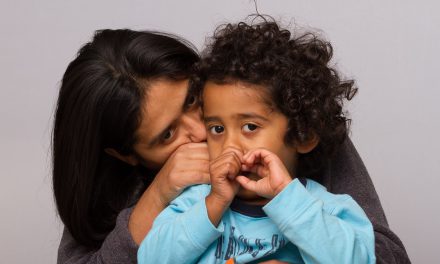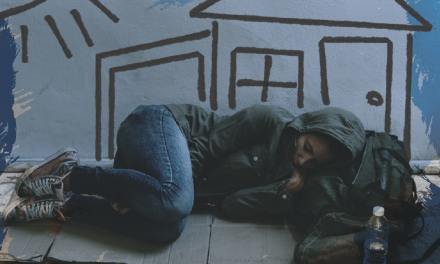The numbers give way to pause…The federal government reports that four Midwestern states – including Missouri – have seen homeless rates among individuals age 24 and younger jump 55 percent since 2016. Missouri has the tenth largest teen homeless rate in the United States.
To provide support, the McKinney-Vento Education of Homeless Children and Youth Assistance Act is federal legislation that ensures enrollment and education stability for homeless children and youth. The act requires schools enroll homeless children and youth immediately, even if they lack required documents like immunization records and proof of residence. Transportation to and from school is also required by the Act.
Data from the National Runaway Switchboard suggests the last recession contributed to increased numbers of homeless youth. Between 2005 and 2008, the Switchboard saw a 200 percent increase in calls from youth indicating economic reasons for leaving home. The Switchboard also reported an increase in the numbers of youth who were kicked out of their homes.
The National Center for Education Statistics (NCES) reported that in the 2014-2015 school year, 2.5 percent of students in U.S. public elementary and secondary schools were reported as homeless children or youth (1.3 million students, with some reports as high as 1.4 million). This percentage varied from 2.0 percent in suburban school districts, 2.4 percent in rural school districts (149,000), 2.6 percent in town districts and 3.7 percent in city districts.
Seeing it as it is.
Homeless youth, often referred to as “unaccompanied youth,” are individuals who share housing with others due to loss of housing, economic hardship, live in motels, hotels, trailer parks, or camp grounds due to lack of other adequate accommodations; live in emergency or transitional shelters; or who are abandoned in hospitals. Homeless or unaccompanied youth also include individuals who have a primary nighttime residence that is a public or private place that is not designated for, or ordinarily used as a regular sleeping accommodation for human beings; and migratory children who live in cars, parks, public spaces, abandoned buildings, substandard housing, bus or train stations, or similar settings.
The Switchboard estimates that on any given night there are approximately 1.3 million homeless youth living unsupervised on the streets, in abandoned buildings, with friends or with strangers. Homeless youth are at increased risk for physical abuse, sexual exploitation, substance abuse, mental health issues and death. Studies estimate that 5,000 unaccompanied youth die each year resulting from assault, illness or suicide.
National Conference of State Legislatures (NCSL) offer these statistics that characterize the issues facing homeless youth:
● One in seven young people between ages 10 and 18 will run away.
● Youth age 12 to 17 are more at risk of homelessness than adults.
● Seventy five percent of runaways are female.
● Somewhere between 6 and 22 percent are estimated to be homeless pregnant girls.
● Twenty to 40 percent identify as Gay, Lesbian, Bisexual, Transgender or Questioning (GLBTQ).
● Forty six percent of runaway youth report physical abuse, 38 percent report emotional abuse, and 17 percent report being forced into unwanted sexual activity by a family member or a household member.
● Seventy ve percent of homeless runaway youth have dropped out or will drop out of school (some estimates are much higher at 87 percent).
The NCSL reports these issues result in the following adverse consequences for homeless teens:
Increased likelihood of high-risk behaviors. This includes engaging in unprotected sex, having multiple sexual partners and participating in intravenous drug use. NCSL goes on to say, youths who engage in these behaviors are more likely to remain homeless and become resistant to change.
Physical and mental health challenges. Severe anxiety, depression, suicide, poor health and nutrition and low self- esteem.
Higher risk for participating in “ survival sex” and drug dealing. Homeless teens are more apt to exchange sex for food, clothing and shelter, which is referred to as survival sex. Additionally, to provide for basic needs, some resort to drug dealing. The NCSL reports that 40 percent of black teens and 36 percent of white teens who experienced homelessness or life on the streets sold drugs (primarily marijuana) for money.
School truancy. Attending school can be a difficult feat for homeless teens. Before the McKinney-Vento Education of Homeless Children and Youth Assistance Act, teens who did not have the normally required documentation could not enroll in school. Even with this enactment, attending school regularly is difficult due to lack of access to transportation to and from school, hunger, and in some cases poor hygiene as a result of homelessness.
Sexual abuse based on gender. GLBTQ teens are more likely to exchange sex for housing or shelter, are abused more often at homeless shelters (especially adult shelters) and experience more violence on the streets than heterosexual youth.
New reality for Columbia, Missouri. For a Missouri school district, one of many in the state, these conditions may be all too familiar. Columbia Public Schools (CPS) had roughly 200 homeless students during the 2013-2014 school year, the district reported. In a KOMU news report a few years back, CPS Supervisor of Student and Family Advocacy, Carla London, said she noticed the number of homeless students doubled over the last few years. She also said the homelessaffect on students is traumatic. “The instability of not knowing where you are going to lay your head at night, orif you’re going to have a meal, has a powerful affect on a child,” she told KOMU. “That makes education slide down the line as far as level of importance when you’re really so worried about the immediacy of your needs.”
ReStart Inc., an agency that serves the homeless in Kansas City, says it turned away an average of 27 young people every month in 2017. There were just not enough beds. “What we are trying to do as a community is to develop a strong and seamless network of emergency response so that no 12- or 18-year-old in our community is on the streets,” ReStart Director, Evie Craig, told Fox 4KC news.
Kansas City, Kansas Public Schools is feeling it, too. They identified 1 ,400 homeless children in their school district alone. “At any time it could be any of us that is experiencing financial difficulties up to homelessness,” she said. “It is really important that judgment is taken out of the picture altogether, that we recognize we are all in this community together to support all of our students and all of our families,” London said.
Close to home, the truth hits hard. The homeless teen population in the Fort Osage School District has climbed 424 percent from 2010 through the 2015-2016 school year, according to a DESE 2016 report. Iva Eggert, Director of Social Services for HCC of Rural Missouri, and an offsite Family Services Division (FSD) worker, knows it all too well. “Every situation is different,” she said. “Not every kid is mad at their parents and decides to leave home. One parent may move to one coast and the other parent moves to the opposite side of the United States. Some parents have financial trouble, while others just have a hard time dealing with life in general.”
Last school year, there were approximately 500 homeless teens in the District. Fortunately, Missouri now allows unaccompanied minors (ages 15-16) and homeless teens to apply for MO HealthNet (Medicaid) if they meet specified criteria. Most, if not all the students Eggert sees, do. These youths are also able to apply for food stamps. However, when the bell rings at the end of the day, many are left to fend for themselves through the night. The State’s efforts to help is a good first step, but so much more is needed.
How the community can help:
● Contribute to local school supply drives.
● Start your own collection drive. Consult with school staff to assess if a need for supplies for students exists and how to contribute. Coordinate with other like-minded individuals to gather resources.
● Partner with organizations and offer support. Here are a few: National Center for Homeless Education, Specialized Alternatives for Family & Youth of America, National Association for the Education of Homeless Children and Youth, 1800RUNAWAY.org (National Runaway Safeline).
To locate a homeless shelter, visit HomelessShelterDirectory.org/Missouri.html.
View and share a PSA about homeless teens here: https://youtu.be/kE-9obD4nrA








